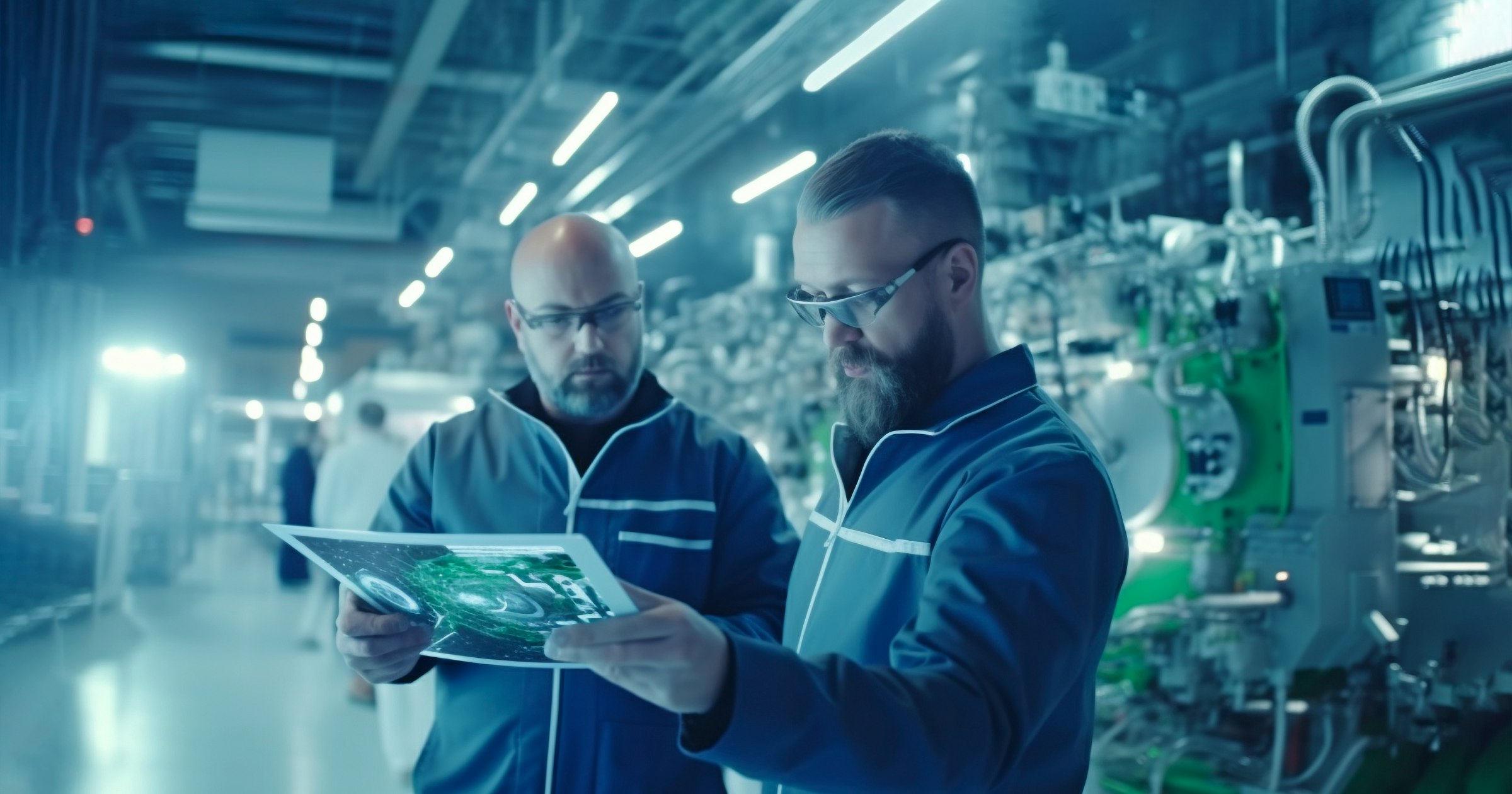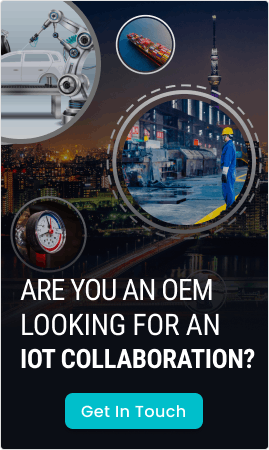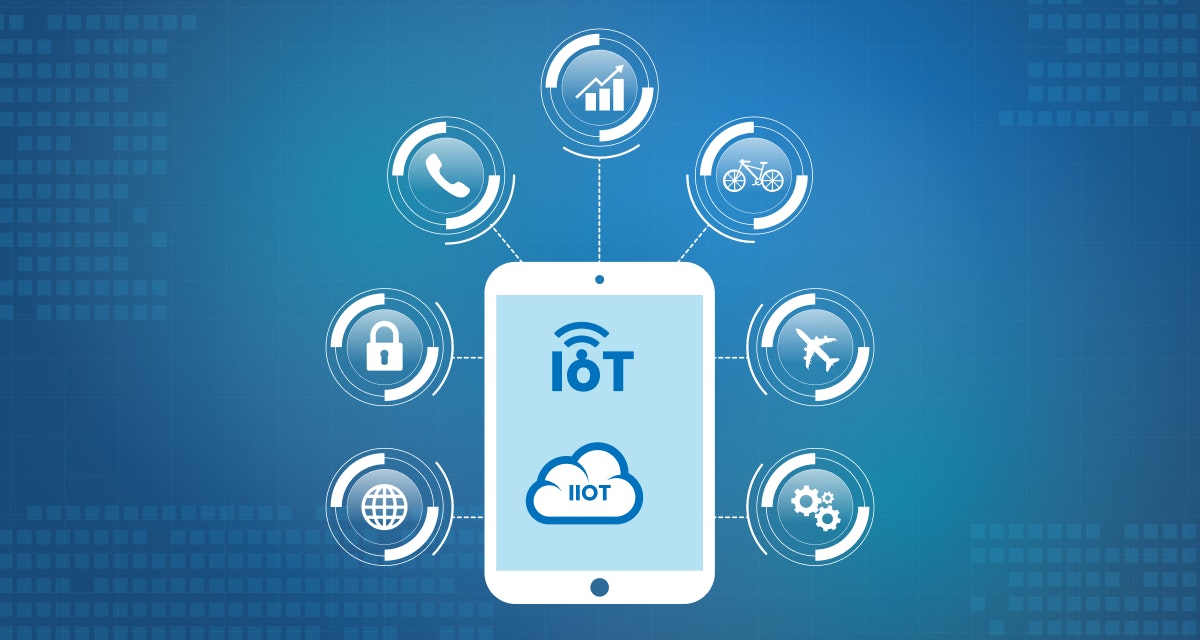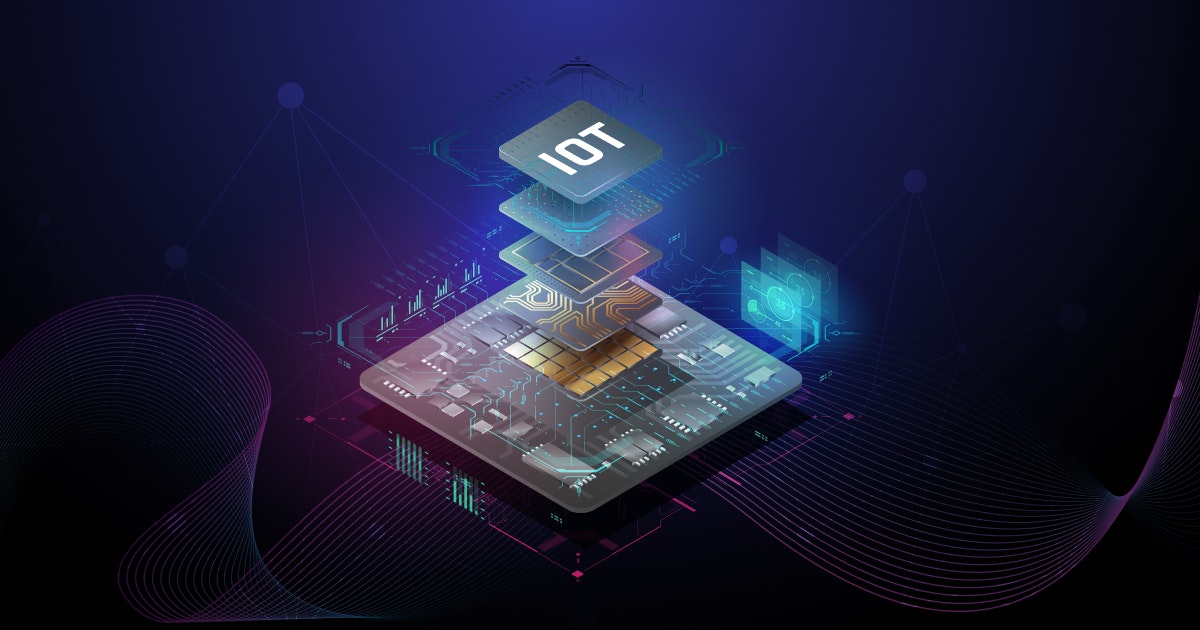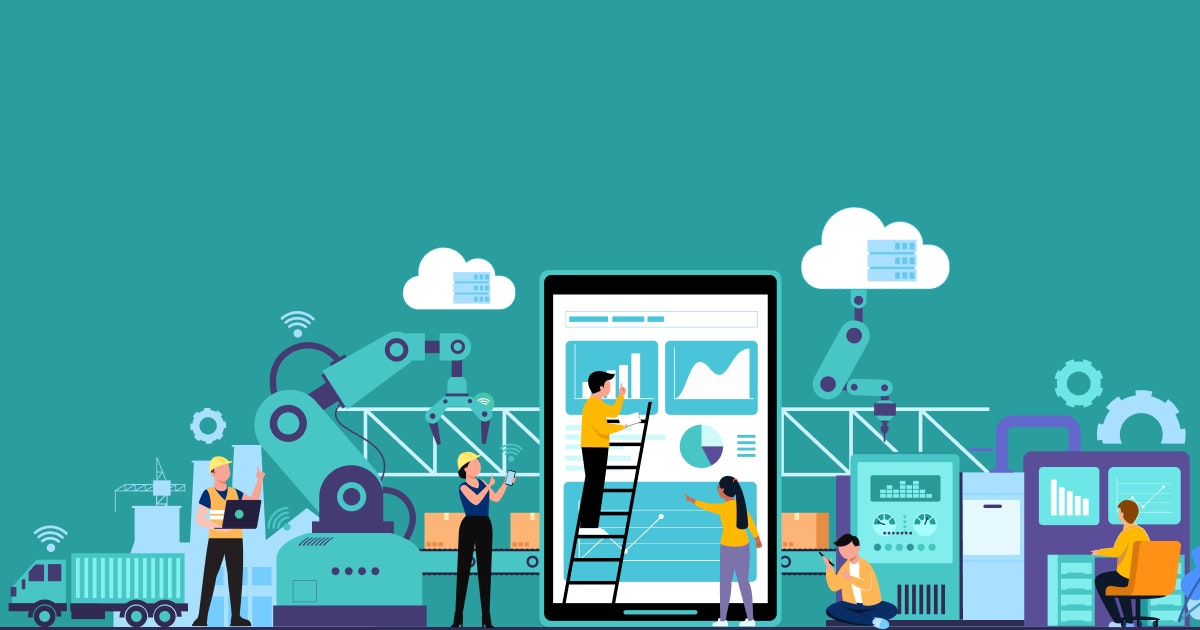Table of Content
Computer vision is a part of the digital transformation ecosystem and has the potential to provide companies with a competitive advantage. Manufacturers looking to become a part of the industry-wide disruption are especially keen to adopt computer vision.
Around 58% of the surveyed participants in a Deloitte survey agreed that they are planning to implement computer vision solutions into their firm. This only ascertains the importance of this technology and how beneficial it is for different industries and companies.
From manufacturing units to smart factories, manufacturers are able to complete their work faster with better efficiency and an innovative thought process. Let’s explore how computer vision fits into the notion of a smart factory and manufacturing today.
Understanding Computer Vision
Computer vision is a unit of Artificial Intelligence (AI) used for comprehending images and videos to deliver an output. It captures, processes, and creates a response based on the media. A technology that has been around for more than 60 years is now being fully implemented in computer vision.
The first experiments for making a machine understand visual data began in 1959, and in 1963, the researchers had their first breakthrough. This year, a computer program could understand a 2-D image and render it into a 3-D form.
Computer vision is similar to human vision, but humans have an added advantage. They have a lifetime of context and training to understand the object and take the requisite action. However, in computer vision, we have to train the machines and help them perform the required functions. The difference between computer and human vision is that computers are trained to take quick action and perform tasks with the help of cameras, sensors, and algorithms.
Computer vision can be successfully integrated into a manufacturing unit with this speed and efficiency. Here, it can process and analyze thousands of stimuli in under a minute and identify defects, issues, and areas for improvement. This is where computer vision has surpassed human intelligence and is now helping build smart factories.
Enhance Your Manufacturing with Custom Computer Vision Solutions!
Explore ServicesUse Cases of Computer Vision
77% of the manufacturers agree that computer vision is essential for them to meet their business goals. With so many manufacturers wanting to integrate computer vision, let’s find out where these manufacturers can use this technology.
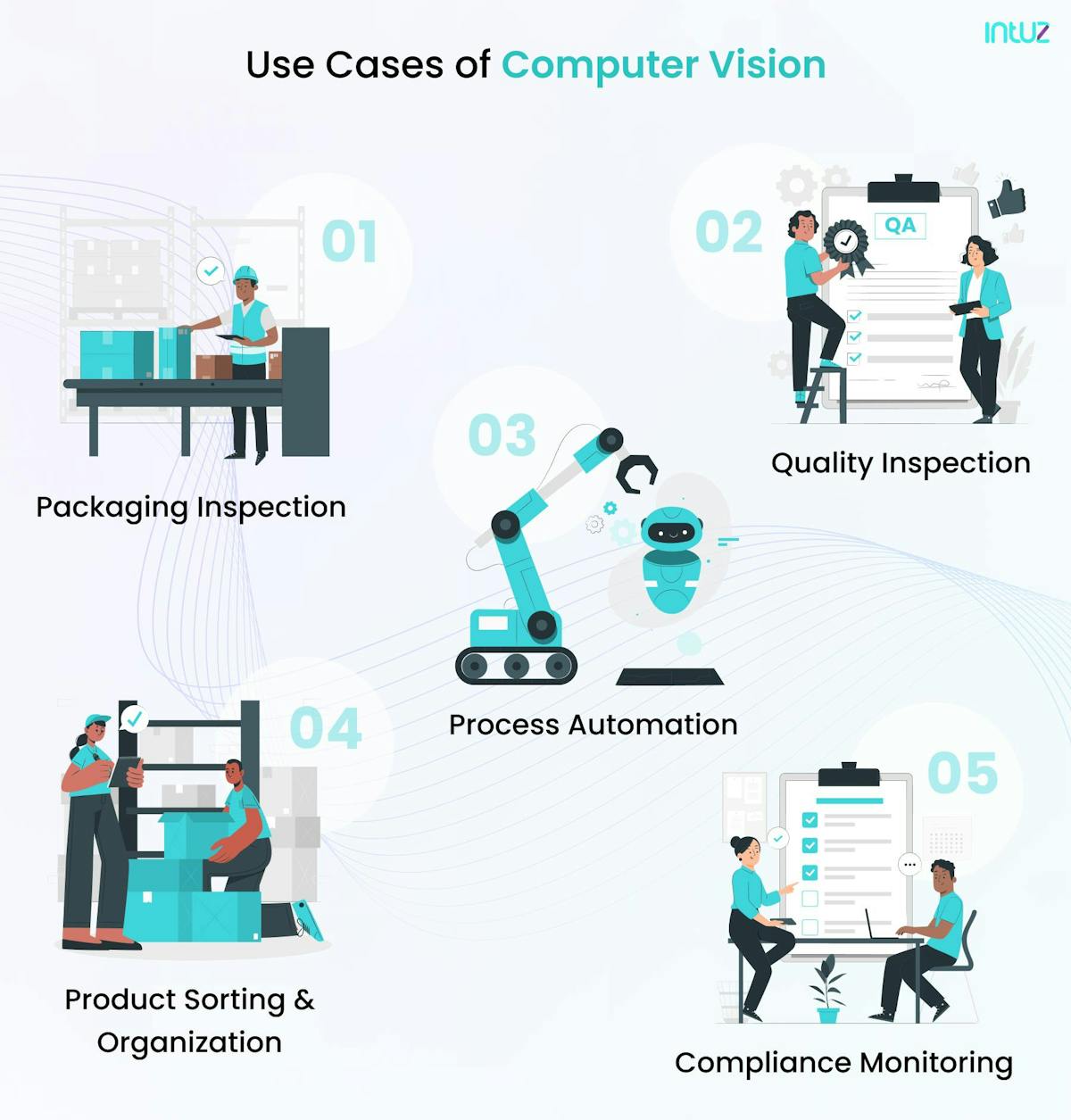
1. Quality Inspection
Computer vision-based solutions are built to reduce human intervention in quality control and inspection. Based on the predetermined parameters, the digital program is able to assess the final product’s output; we can increase inspection efficiency.
In manufacturing, computer vision can be used to filter out counterfeit goods from good ones. Manufacturers can configure these programs to run autonomously on their premises and inspect every product.
Google’s Visual Inspection AI has been found to be 10X more accurate than other machines used for the same purpose. Well-built programs can detect multiple defects in a single image without human intervention, making the production process agile.
2. Process Automation
With computer vision systems integrated into the assembly line, manufacturers can automate the production process. As these programs take control of how the product is built and assembled, they will deliver the products with higher efficiency, seamless consistency, and productivity.
However, instead of completely automating the entire process, it’s better to take a collaborative approach. Elon Musk did try to completely automate the Tesla car production assembly line, but in his words, “excessive automation is a mistake.” The CEO supports a collaborative approach where human adaptive intelligence is also utilized along with automation.
Today, Tesla’s production assembly uses a mix of computer vision-led automation and humans to create the most efficient products. Using computer vision, 3-D models are created with software, and these models are used by computer vision to create the product.
3. Packaging Inspection
When companies are competing in the market, everything they do counts. Similarly, for a product to become successful in the market, it needs to have everything done right, including packaging. One might think that using computer vision for packaging is futile, but that’s not correct.
The right packaging has the power to attract customers and make them purchase the product. In addition to inspecting the product for defects, the same computer vision can also detect anomalies in the packaging.
It becomes a part of quality assurance and a guarantee that no packaged product has gone unnoticed. Damaged packaging can smudge the brand's reputation through customer dissatisfaction. Moreover, packaging inspection can also work for assessing the work output and productivity.
Key Applications And Benefits Of IoT-Powered Telepresence Robots
Learn More4. Product Sorting and Organization
Given a computer vision program’s capability to assess every product through a barcode, manufacturers can use it for sorting and organization. With assembly lines advancing the product to the next step, computer vision programs can be used to sort and count the items.
It can automate the sorting and organization process, which, if done manually in a high-volume production environment, can lead to a waste of time. Computer vision can process the product information and divert the item on the assembly line in the right direction.
5. Compliance Monitoring
As manufacturers have to feed data to a computer vision program, they can also input compliance requirements and regulations. The program can then follow these guidelines and ascertain that every product conforms to them.
Moreover, manufacturers can benefit from this solution because computer vision can check everything at a much higher speed than humans. However, human intervention is required here to check the items shortlisted by computer vision once again.
We can feed in compliance requirements, regulations, and environmental guidelines, among other things.
These are the most prominent uses of computer vision. In addition to these, manufacturers can use this technology for supply chain management, designing, and ensuring workplace safety. In the next section, we will discuss the best practices for implementing computer vision in a manufacturing unit.
Best Practices of Computer Vision in Manufacturing
Computer vision is a revolutionary technology that helps manufacturers improve their production, packaging, and inspection processes. However, even a potent technology like computer vision can fail to meet expectations. This is where the importance of working with best practices comes in.
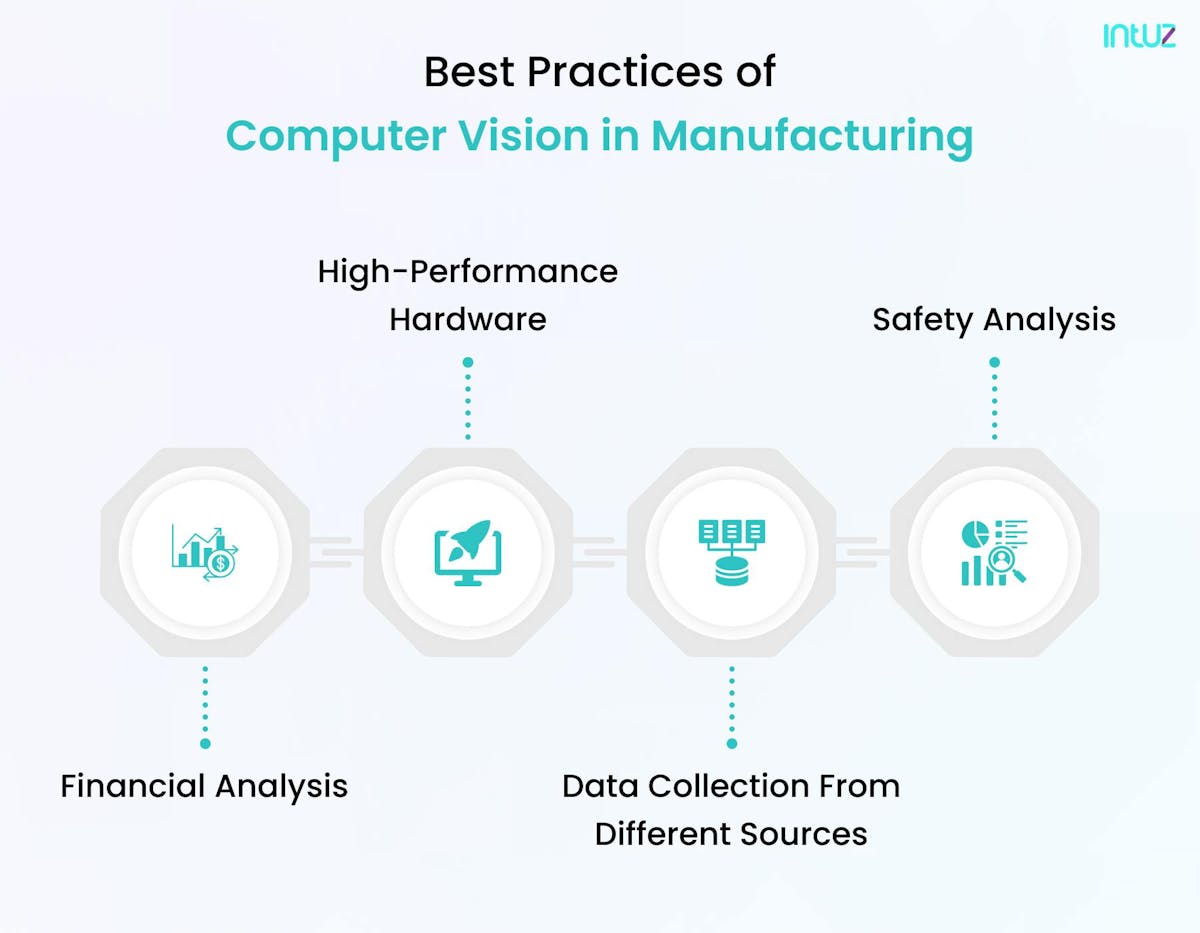
1. Data Collection From Different Sources
Every intelligent computer program needs the right training, which comes through data. A computer vision program also relies on data, and the higher the quality of the training data, the better the results it can provide. For higher accuracy, feed data from different sources to the program.
More data makes a computer vision system more mature, but that is also dependent on data labeling, so data annotation is necessary if you want the computer vision program to generate good results.
2. High-Performance Hardware
Software alone cannot provide results; you also need to have an equally efficient hardware system. Intelligent programs are resource-intensive; hence, they require a performance-ready hardware system to function. In addition to the hardware that runs the software, you will also need high-speed cameras, sensors, actuators, and other recommended devices.
More importantly, it’s essential to integrate them all with the firmware so that these devices can deliver all the data into a single solution.
3. Financial Analysis
Computer vision systems are capital-intensive. They require a substantial amount of money for setup, operation, and maintenance. Hence, set aside a budget for bringing computer vision into your organization.
A computer vision program in a car can increase its price by $10,000 to $15,000. Imagine the cost of setting up this system in a manufacturing unit that processes hundreds of thousands of bits of information every day. While there are implementation costs, manufacturers also have to spend money on training and data provisioning. Data annotation, labeling, and updates are continuous processes that require recurrent investment. Hence, by running a financial analysis, you can know whether spending money on a computer vision program outweighs the benefits.
4. Safety Analysis
A computer vision setup has several integrated devices communicating with each other. They are connected through different sorts of firmware and hardware, which have multiple vulnerabilities. These gaps can be used for cyberattacks, leading to data theft and leakages.
Hence, manufacturers must also invest in installing a robust cybersecurity system. They must implement security measures like identity and access management, two-factor authentication, intrusion detection systems, encrypted data exchange using cryptographic measures, and IoT device authentication.
Robotic Process Automation for OEMs
Learn MoreConclusion
Modern-day manufacturing units are getting more agile and efficient with the help of technology. The computer vision technology adds to their robust infrastructure, giving manufacturers a better scope for delivering high-quality products at speed. From ensuring quality control to automating the assembly process and inspection, computer vision is helping manufacturers become more productive.
At Intuz, we have a complete understanding of computer vision technology. We leverage our understanding to build intelligent solutions that help manufacturers integrate computer vision seamlessly into their operations.
Book a 45-minute free consultation with our experts with our experts to learn how computer vision can upgrade your manufacturing unit and help you build a smart factory.
